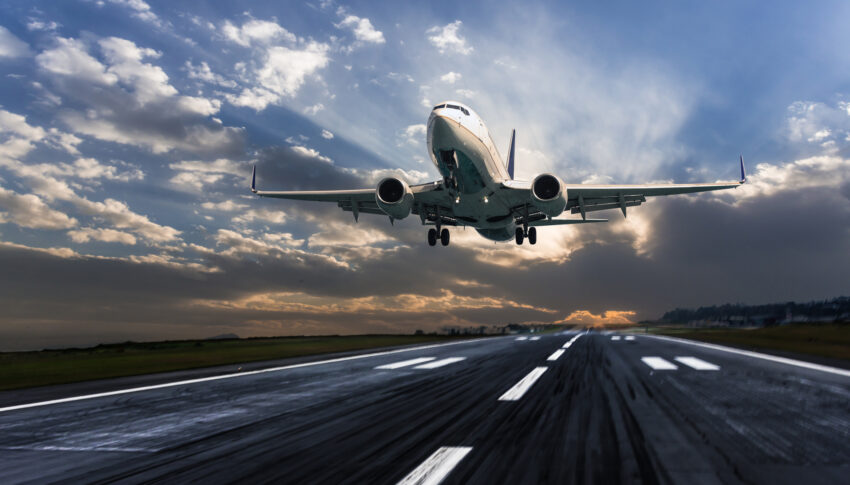Optimising performance in all phases of flight is critical for aviation, not just to operate more efficiently from an expenditure perspective, but to reduce its emissions and environmental footprint. New optimised landing technologies and processes are breaking cover, including satellite-based landing systems and changes in the ways that landing traffic and runways are managed. To learn more, we sat down at length with experts from Eurocontrol and Airbus.
“In recent years, Eurocontrol has been supporting the development and implementation of a set of operational solutions for enhancing the management of landing traffic and runway performance,” experts from the organisation, which is the principal organisation for planning and control of air traffic management in Europe, tell us via a spokesperson.
“In the context of runways becoming seen as scarce resources, this aims at making best use of available infrastructure, ensuring the optimisation of arrival separation by addressing throughput constraints — such as surveillance, wake or runway occupancy time — together with the optimisation of separation delivery performance with advanced air traffic control tools,” says a Eurocontrol expert. “We also worked on optimising approach profiles and facilitating use of advanced approach techniques, contributing to more environmental-friendly operations. These solutions are gathered in a runway performance solution package that can be used separately or combined as basis for local deployment in order to provide sustainable improvements.”
These include optimised wake separation, optimised runway occupancy time spacing, reduced minimum radar separation, time-based separation, machine learning based calibration of approach spacing, optimised runway delivery, increased second glide slope, and dual threshold operations with second aiming point.
Satellite landing systems are maturing in technology and across platforms
Airbus, meanwhile, is focussing on satellite and performance-based navigation, including satellite landing systems (SLS), which allow aircraft to save fuel through flying more flexible routes.
When landing, says engineering navigation specialist Cedric Corral, this “enhances the airlines’ operations by enabling stable approaches especially at airports currently not having precision approach means, at main runways as a backup to ILS [instrument landing systems] — for example during maintenance — or at alternate airports in case of diversion.”
In essence, this means that the aircraft calculates its position (technically, its deviation computation) based on geometric reference via global navigation satellite system (GNSS), rather than on the previous barometric reference.
In terms of the technology, Corral explains, “Satellite Based Augmentation System is used by Airbus SLS guidance. A ground station receives the genuine GNSS signal. The signal delay, introduced by the ionosphere layer, is monitored, and a time correction is sent back to the aircraft using a geostationary satellite. The aircraft is actually receiving the genuine GNSS position and the augmented position in order to increase the accuracy and integrity of its estimated location.”
“Thanks to this augmentation,” Corral continues, “the aircraft trajectory can be compared to a published approach stored inside the navigation database without any equipment installed at airport level. This technology requires the latest Multi-Mode Receiver available on the market from our suppliers, Collins and Honeywell.”
Arriving in Europe with the Airbus A350 in 2015, satellite landing has been available on the A220 and A350 since the airframes’ entry into service, while easyJet took delivery of the first A320 family aircraft earlier in 2022. Retrofits for the A380 will soon be available, we understand from Airbus. SLS is presently used for published Localiser Performance with Vertical Guidance (LPV) approaches, which are primarily currently available in Europe and North America, with rollout to other continents having started but remaining contingent on satellite infrastructure being implemented.
Within the flight deck, “since the SLS function design was fully integrated into the cockpit display architecture it was possible to make it very pilot friendly,” Corral says. “The result is that with SLS pilots don’t have to change the way they fly the aircraft because the guidance symbology presented in the cockpit — on the “Primary Flight Display, the PFD — looks just the same as what they are already used to for an ILS approach. In particular, the lateral and vertical deviations are identical to the ILS equivalent.”
Future developments have digitalisation and new technology at their core
Airbus is planning further rollout of SLS to other aircraft, as well as well as on an autoland capability for its airframes.
On the Eurocontrol side, its experts tell us, “among the next steps of enhancement on the horizon, will be the use of machine learning-based predictions integrated in air traffic control tools and used with live data, as well as the use of aircraft data downlink.”
A substantial part of the deployment of these solutions will require corresponding investment into air traffic control system upgrades. Increased use of GNSS navigation, including with ground-based and satellite-based augmentation systems, are a key enabler for advances including all-weather operations, the increased second glide slope, and dual threshold operations with second aiming point.
This is currently very limited in implementation: Eurocontrol data suggests that only about 25 percent of the commercial aircraft models for the traffic it targets are equipped with satellite-based augmentation systems, while the figure is less than 15 percent for ground-based augmentation systems.
Around air traffic management systems, Eurocontrol says, future developments “will require interoperable systems, and System-Wide Information Management (SWIM) and sharing, exchanging data for achieving greater operational predictability, as well as use of ADS-C for air-ground exchange. The increased equipage of ADS-C capabilities is therefore also of essential interest.”
Overall, says Eurocontrol, “Increasing fleet equipage and airport with advanced capabilities remain a fundamental goal, for supporting the use of more individualised and optimised trajectories, reducing noise impact as well as emissions and exploiting the full potential of the solutions contributing to more resilient and efficient airport and network operations.”
To get there, Eurocontrol will be working closely with airframers, operators and the rest of the industry — as well as with regulators and standards bodies — to further develop the maturity of technologies like machine learning and artificial intelligence.
Author: John Walton
Published: 29th September 2022




